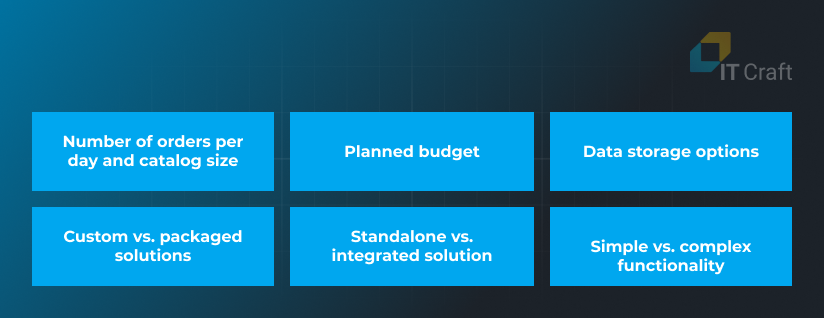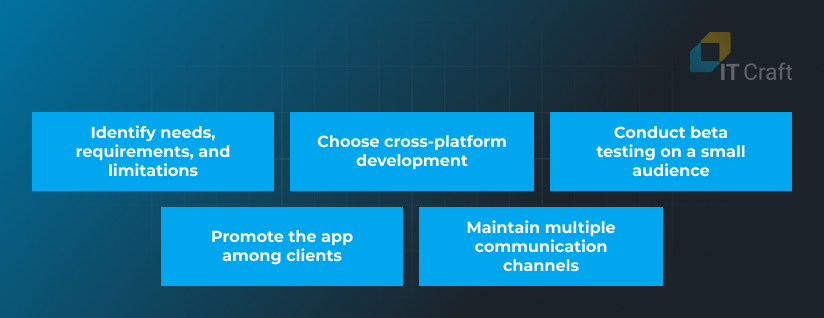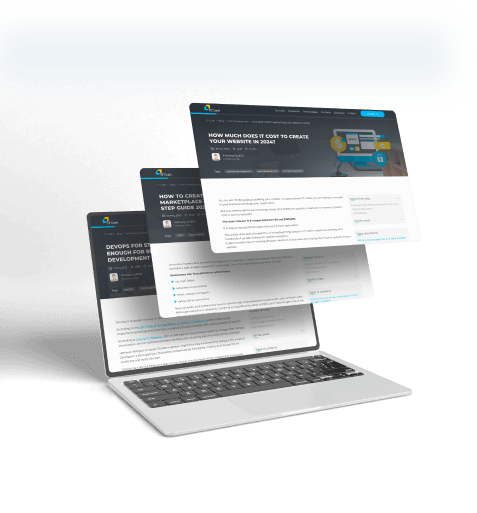In today’s fast-paced, competitive business landscape, efficient order management is vital for food manufacturers. Businesses are turning to B2B order management software to optimize operations and gain a competitive edge. Little wonder the global multichannel order management market is expected to reach $4.2B by 2027, growing at a CAGR of 9.4% from 2022 to 2027.
By the end of this article, you will clearly understand the order management software landscape, enabling you to make an informed choice to enhance your operational efficiency, improve customer satisfaction, and drive growth in your food manufacturing business.
So, let’s explore all the details that can help revolutionize how you manage your orders and propel your business forward.
1
What is B2B order management software?
A B2B order management system introduces an efficient method for businesses to receive and manage client orders. The system tracks order information such as a list of items, item quantity, client notes on order details, etc.
Custom software allows a small team to process many orders efficiently. Clients place orders via an online order management system or a dedicated smartphone/tablet app. Managers check order details and confirm orders.
The complexity of such B2B order management systems varies. A simple app can be launched as a stand-alone solution—no data exchange with the rest of the company’s ERP system. The software stores data in its database. Customer managers forward a file with daily orders after checking and confirming it.
The order management software can also be integrated seamlessly into the manufacturer’s software system. In this case, order management software exchanges data automatically with the software used by operations, accounting, or delivery departments.
Order management software can be adjusted for both B2B and B2C. This article focuses on B2B solutions, but IT Craft develops both.
2
How does a B2B order management system work?
For small businesses, the management software includes:
- client app
- special functionality for managers
- tech functionality for app administrators (optional)
It encompasses the following essential steps of the ordering process:

There are three main categories in the B2B order management system: clients, managers, and app administrators (optional).

Would automating order processing give you less stress?
Contact us to see how your idea becomes a reality.
Contact Us
3
How does a custom management system help?
Perhaps you ask yourself, “What makes purchase order management software different? Where is the value in sales order management software?”
The value lies in clarity, transparency, and efficiency. What your clients order is what they get. And how does such software help you? You get to spend evenings with family and friends, relaxing and enjoying life more.
Let’s analyze different approaches to order management and emphasize their differences.
Case 1 Outdated: Before the age of the computer, customer managers used ledgers. They received requests via phone calls, faxes, or in-person client visits. Managers noted order information and wrote orders for other departments. Both client and company needed a large catalog to check items. Handling orders consumed a great deal of time.
Case 2 Computerized: Managers handled orders via phone calls, faxes, and emails in the computer era. Customer managers entered order information into Excel tables or a CRM. They emailed collected orders via an internal system. This was faster than handling paper orders. Order management took less time.
Case 3 Online: Many businesses use social networks and free messenger apps (e.g., WhatsApp or Facebook Messenger) to collect orders. Customer managers copy and paste single orders to Excel or an internal CRM system. They must regularly check notifications, ensuring immediate response to requests. This can be stressful and only works well for low-volume orders.
Case 4 B2B order management app: Today’s forward-thinking businesses use B2B order management apps. The ordering lies with their clients, who get a self-serving system where they see everything at a glance. An order management app eliminates uncertainty in order handling on both sides. Clients see what they order. Manufacturers see what clients order—no extra checks in the catalog are needed. No information is distorted unless something extraordinary happens.
4
4 Key Benefits of Custom Management Solution Development for Food Manufacturers
Let’s look at the main perks you get:
1. Decreased processing time: Custom B2B order management software significantly reduces time needed for order handling. Eliminate manual data entry. Customer managers only need to check and confirm orders. More advanced systems can automate order confirmation and sending, that saves time and eliminates late-night work.
2. Increased accuracy: Custom order management software eliminates the risk of errors in the order workflow. Customer managers no longer worry about pasting details into the wrong file. Additionally, double-checking and order confirmation with the client’s manager can still be done to ensure accuracy.
3. Improved customer satisfaction: Implementing an online order processing system saves time for both food manufacturers and their customers. The streamlined process reduces the need for phone calls and waiting for confirmation, resulting in increased customer satisfaction. Predictability in order handling motivates long-term client relationships.
You might also be interested in our recent article on creating an online marketplace.
4. Cost-effective scalability and profitability: B2B food manufacturers often experience high volumes of daily orders within a short period. Custom B2B order management solution allows easy scalability by adding servers to handle the increasing order load. This scalability does not require significant upfront costs, optimizing profitability by reducing wasted resources and improving order accuracy.
A custom management solution brings benefits such as improved planning, visibility into market trends, efficient catalog management, and enhanced brand representation. It enables businesses to optimize costs, prevent overstocking, and demonstrate the advantages of a streamlined ordering process to prospects.
5
Order management solutions for B2B sales

Order management solutions for B2B offer comprehensive software tailored specifically for the unique needs of food manufacturers. These software tools streamline the entire order management process, from order placement to fulfillment. This results in enhanced efficiency, improved customer satisfaction, and increased revenue.
Here, we will explore the key features of B2B sales order management software in the food manufacturing sector.
1. Order placement and processing: The software automatically confirms order details, checks product availability, and applies relevant pricing or discounts. This ensures exact and efficient order processing.
2. Inventory management: Gain real-time visibility into inventory levels, optimize stock levels, track expiration dates, and manage batch/lot numbers. This reduces costs and improves customer satisfaction.
3. Order tracking and fulfillment: Customers can easily track order status, from processing to completion and delivery. This visibility enhances transparency and fosters trust between manufacturers and their customers. Additionally, the software helps efficient order fulfillment by automating order prioritization, routing, and scheduling, ensuring prompt and accurate deliveries.
4. Analytics and reporting: By analyzing robust data provided by these solutions, food manufacturers can identify growth opportunities, optimize inventory levels, forecast demand, and refine their sales strategies. Generating custom reports and dashboards empowers businesses to make data-driven decisions that drive profitability.
By implementing a robust order management solution, food manufacturers can effectively manage their B2B sales process, improve operational efficiency, and gain a competitive edge in the industry.
6
How to choose the right order management system for the food business?

With many options, choosing the right B2B online ordering system for your food business can be challenging. Consider the following factors to find the best implementation plan:
1. Number of orders per day and сatalog size: Evaluate the volume of orders your business receives daily and the size of your product catalog. Ensure the chosen system can handle the expected order load and accommodate your entire range of products.
2. Planned budget: Define your budget for implementing an order management system. To make a well-informed decision, consider the costs of off-the-shelf software and custom development.
3. Data storage options: Decide whether you are comfortable storing order data with a third-party provider or prefer deploying your infrastructure with 24/7 server availability and emergency channels. This decision impacts data security, maintenance costs, and control over client information.
4. Custom vs. packaged solutions: Off-the-shelf software works for small businesses with customizable functionality and predictable pricing. However, custom software development might be needed for scalability and data control, offering long-term cost-effectiveness.
5. Standalone vs. integrated solution: Decide between a standalone B2B food management software or one that integrates with existing software. Standalone options are simpler but require more manual input, while integrated solutions automate data processing at higher development and maintenance costs.
6. Simple vs. complex functionality: Assess the required level of functionality. A simple app handles basic tasks like displaying offerings, selecting items, sending orders, and merging them. Complex order management software is necessary for advanced features like analytics, real-time tracking, payments, advanced administration panels, and synchronization with accounting departments.
You can choose the right order management system for your food business by carefully evaluating these factors. Remember to consider your business’s specific needs, scalability requirements, and long-term goals to ensure successful implementation.
7
Tips on custom order management software development for food manufacturers

Successful implementation of custom order management for B2B software requires careful planning and execution. Consider the following tips to maximize the benefits of custom order management services apps tailored specifically for your food manufacturing business:
1. Identify needs, requirements, and limitations: Communicate these requirements to the development team to ensure they can design a system that meets your business needs while providing a realistic estimate of your marketplace website development cost and timeline.
2. Choose cross-platform development: Choose frameworks like Ionic or Flutter to create a single code base that can be adjusted for different platforms (Web, Android, iOS), simplifying maintenance and updates.
3. Conduct beta testing on a small audience: Offer a limited number of your regular clients the opportunity to test the app and provide feedback. Incorporate user feedback to enhance the app’s usability and efficiency.
4. Promote the app among clients: Actively promote your order management system to clients, emphasizing its benefits and simplicity. Display it prominently on your website and social media, Provide resources like webinars or tutorials to familiarize clients with your system.
5. Maintain multiple communication channels: Together with the app, have backup communication channels, such as phone, email, or live chat, to accommodate customer needs and ensure a seamless ordering experience.
Following these tips, food manufacturers can successfully develop and implement a custom order management software solution that streamlines operations, improves customer satisfaction, and drives business growth.
8
How IT Craft’s dependable team saves you time and stress

If you want a successful app launch, you must choose the best development team. A great team makes it possible to save development costs and launch your software on time and within budget. No exceptions.
Be cautious and wise when choosing a team to deliver the required results. To do this, you must understand the anatomy of software outsourcing.
This is why IT Craft excels as a reliable tech partner for its clients. IT Craft has decades of experience to ensure you get what you order and expect.
Expertise
If you want a successful app launch, you must choose the best development team. A great team makes it possible to save development costs and launch your software on time and within budget. No exceptions.
Full life-cycle development
IT Craft development teams first dive deeply into project requirements to clarify all details and only then work on app components. They focus on B2B order management software for small businesses so that you can focus on your business goals.
Equal treatment of every project
IT Craft treats all projects and all clients equally. We use our expertise to ensure source code meets the industry’s standards and best practices. We help you build a stable tech basis for your growth.
Transparency
As a product owner, you are an important part of the team. To succeed greatly, you must take part in project planning. You get regular reports and access to completed functionality. Upon launch, you receive all source code and necessary project documentation.
Post-launch guarantee
Working together doesn’t suddenly stop after your product launches. You are not left to cope on your own. To ensure stability in the software, the development team remains in constant contact with you for 1 – 3 months.
Do you want to know what clients think about IT Craft’s services?
Check out testimonials about IT Craft.
!
Conclusion
Are you still relying on last century’s old-fashioned method of phone, paper, Excel tables, or social networks? Isn’t it time to get serious about your business success and consider order management software for B2B?









